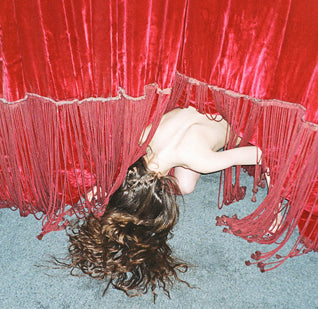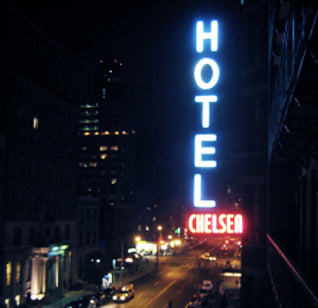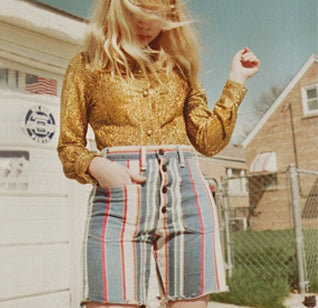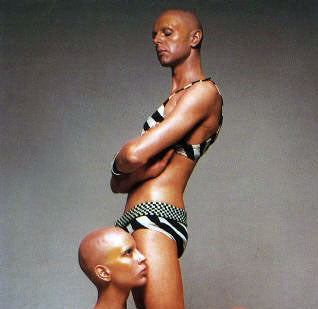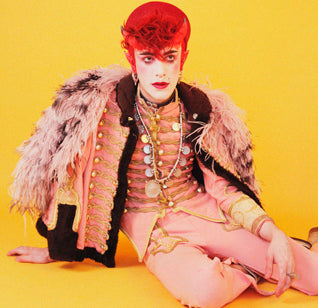GIMME SHELTER
Hisham Samawi brings Arab art to London and offers asylum to his artists
by Maria Raposo
When we think of Syria we tend not to think of its blossoming art scene. It does exist; it’s just been shipped abroad. Hisham Samawi tells me how he and his cousin Khaled transformed Damascus when they co-founded Ayyam Gallery in 2006. Before this “there was no contemporary art scene” Hisham remembers, but they wanted to see if they could tempt one into fruition.
With their launch they discovered enormous talent. The newly opened gallery surprised tourists with cutting edge contemporary art. But their success in Damascus was short lived; when civil war erupted in 2011, Hisham knew the space could serve a higher purpose. The gallery was transformed into studios, becoming a refuge for artists living in the city’s dangerous outskirts. Artists used the site as a safe haven to work in peace, or even sleep.
As political tensions grew, the cousins underwent huge efforts to relocate their artists and their artworks away from danger; many were moved to Dubai, where their new headquarters were based. Hisham and Khaled wanted the artists to have complete creative freedom, aware they could be “targeted” if their work was critical of Syria’s President Assad. “These artists carry an important voice for their generation” Hisham explains, emphasizing why it was so important to preserve their legacy. “Ayyam is like a family. We can’t help everyone, but we do what we can”.

Khaled and Hisham Samawi by Susanne Hakuba
Now based in Dubai, Hisham speaks in a confident American accent, masking his Middle Eastern roots. He was born to Syrian parents but grew up between Europe and the States. He sits across the table from me; his intense blue eyes and steady gaze make every word he says seem completely sincere. We are in the back room of Ayyam’s London branch. Although there are four other branches scattered across the Middle East – Damascus, Dubai, Beirut and Jeddah - their move to the UK is particularly significant because it marks the beginning of their expansion west.
“There are few positive things coming out of the Middle East”, Hisham declares, “but one of them is the art scene.” Since opening in January 2013, the London gallery has offered a more hopeful commentary on life in the region compared to the depressing narrative in the news. “We wanted London to experience something completely different” Hisham says. “There is the other side to The Middle East that’s not just death, dictators and destruction, there’s a more human side.”
To avoid an East vs. West divide it’s important that a universal sense of community is introduced; if not by the media, then by the art world.
Western audiences are in danger of being numbed to Middle Eastern turmoil: In Baghdad earlier this week at least 38 people were killed by a suicide bombing outside a café, but compared to the Boston bombings the media coverage in Britain and the US was minimal. To avoid an East vs. West divide it’s important that a universal sense of community is introduced; if not by the media, then by the art world.
Recent exhibitions at Ayyam’s London branch have invited UK audiences to see Middle Eastern issues in a way that invites understanding. Their artists focus on human problems tinged with societal grievances; making the art easier to relate to than purely political work.

Sharooq Amin, Popcornographic An Arabian Tragedy, 2012
In the past the gallery has exhibited Sadik Alfraji whose displacement from his homeland of Iraq to The Netherlands manifested itself in his art through dark, shadowy figures - melancholic in their weary movements and philosophical thought. We’ve also seen pieces by Safwan Dahoul who, in his first body of work since fleeing Syria, indulged in quiet escapism, retreating into dream-like worlds where we meet his late wife.
Khaled Jarrar recreated the barrier that separates Israel and Palestine in a site-specific installation. The piece was executed beautifully in the form of a concrete wall, splitting the Mayfair gallery in two. Its imposing presence allowed visitors to feel the oppressive nature of separation, first hand.
Hisham believes his artists don’t comply with traditional ideas of Middle Eastern Art: “Not everyone is going to become cliché political and it’s not all veiled women and calligraphy”. And it’s not all painting. Hisham informs me that Saudi Arabia has the highest per capita use of social media in the world and his artists adjust accordingly, creating video work that is easily transferable online.

Sadik Alfraiji, The Alphabet of the Body, 2013
Like his cousin, Khaled, who worked in finance, Hisham is from a business background with experience as a music producer. The cousins’ professional attitudes mean that they haven’t forgotten about the future. Their incubator program gives young artists the time to “develop and think” before Ayyam introduces them to the market. Hisham personally visits their studios, assessing whether they are ready to settle into their style – something which is important so as to avoid confusing collectors.
Hisham is hopeful about Syria’s future: “I’m an optimist, in the long run logic will prevail”. Together, we wonder whether Syria’s troubles have, in a perverse way, had a positive effect on the country’s culture. In times of turmoil, does the art get better or are people simply searching more for something of significance? He believes it’s the latter: “They’re trying to find a method to the madness”.
All photographs courtesy of Ayyam Gallery.
Catch Ayyam Gallery's current exhibition in London featuring Samia Halaby












